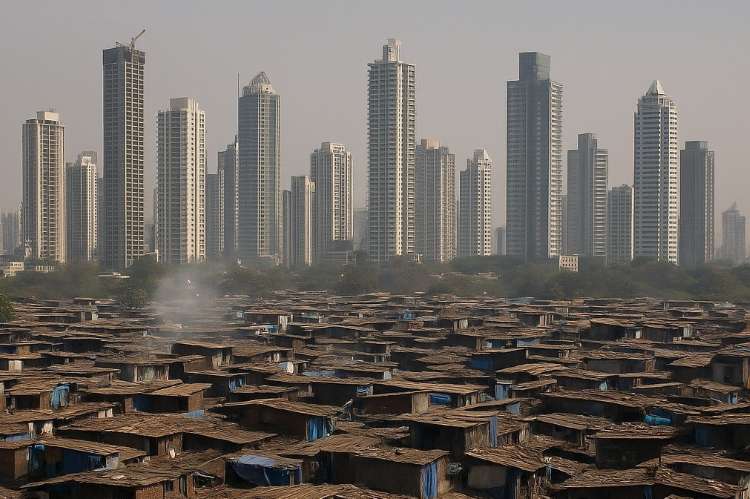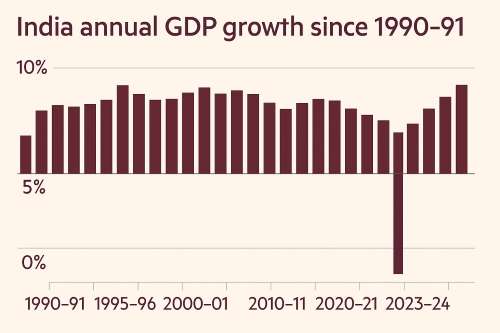
Viksit Bharat @2047: India, now the world’s most populous country, has set itself the bold target of becoming a developed nation by 2047 — the centenary of its independence. Having pulled millions out of extreme poverty over the past two decades, India is looking for the next leap: sustained high growth that ensures broad-based prosperity.
The economy’s performance during the pandemic, powered by a calibrated policy response, offered a lesson worth repeating: steady macroeconomic management with clearly defined goals can deliver results even in turbulent times. India emerged among the fastest-growing major economies during a global slowdown — testimony to the payoff of patient, rules-based governance.
What sets India apart today is the 25-year planning horizon it has adopted, one that few democracies would attempt. The goal is not vague — India wants to meet the World Bank’s benchmark for high-income countries. In 2024, this threshold stands at $14,006 per capita, up from $12,746 in 2015. By 2047, that benchmark is expected to reach $17,635.
India’s current per capita income, by comparison, is only $2,940. To bridge this gap, the country will need to grow per capita income at an annual rate of 8% to meet the lower threshold, or 10% to meet the higher one. Over the past decade, India managed 5.4%. The scale of ambition, then, is enormous — and so must be the clarity and focus of execution.
READ I India’s big bet on supply chain realignment
Viksit Bharat needs a state-led strategy
If India is to have a shot at the Viksit Bharat goal, it cannot depend on Delhi alone. NITI Aayog must become more than a central think tank; its presence must be mirrored in the states through equivalent institutional mechanisms. Only then can Centre–State coordination move beyond bureaucratic ritual into meaningful alignment. Growth must be geographically balanced and sectorally targeted. That requires mapping high-potential regions and sectors, and designing policies that leverage both forward and backward linkages.

India needs to avoid the mistakes of top-down models that failed to deliver in the past. This time, decentralised but coordinated policy action will be critical. A robust federal structure must be a feature, not a casualty, of long-term economic planning.
Learning from Make in India
A decade since its launch, the Make in India programme has had a mixed record. It’s time to extract lessons — what worked, what didn’t, and what can still be salvaged. The manufacturing sector must play a much larger role in India’s future growth story, particularly in producing intermediate and investment goods.

To achieve this, India needs a real-time supply chain monitoring mechanism to ensure the timely movement of critical inputs across regions and industries. Without such support systems, the country risks being caught once again in the logistical bottlenecks that often cripple industrial momentum. The ministry of commerce must work in close alignment with logistics and infrastructure departments to make this happen.
Tapping the demographic dividend
India adds nearly 10 million people to its workforce every year, but this dividend will not last forever. In less than two decades, the bulge will shrink. If India is to reap the benefits, it must act now.
This means massive investments in health, education, and skilling. States will need to build wellness centres and modern training institutes. An idea worth revisiting is the establishment of state-level MSME universities, on the lines of agricultural universities, to provide focused entrepreneurship and technical education. The goal is not just job creation, but productivity enhancement at scale.
Financing growth: Empower the last mile
Finance is to growth what oxygen is to life. While much attention is paid to banks and capital markets, India must also recognise the quiet but critical role of NBFCs and microfinance institutions. These are often the only source of credit for informal and small enterprises — the very agents of last-mile economic activity.
Rather than treating NBFCs as a regulatory headache, policy must encourage their formalisation and integration into the financial mainstream. A roadmap for financial sector reforms — with clearly defined annual milestones and a monitoring mechanism — would help stabilise expectations and build trust across borrowers and lenders.
Policy synchronisation, not silos
Macroeconomic policy must not be an assortment of disconnected initiatives. Fiscal, monetary, industrial, trade, and agricultural policies must reinforce each other. This requires institutional synchronisation — starting with Union and state budgets that embed the objectives of Viksit Bharat in their very design.
Mid-year budget reviews of Viksit Bharat targets, both at the Centre and in the states, could ensure alignment with national goals. Similarly, RBI’s monetary policy must incorporate real-sector feedback more systematically, especially with regard to credit flows to infrastructure and SMEs.
A ministry for the mission
If India is serious about achieving developed-nation status by 2047, it needs institutional backing beyond slogans and annual reports. A dedicated Ministry for Viksit Bharat, led by a senior cabinet minister and reporting directly to the Prime Minister, could anchor this mission. Its mandate: track outcomes, ensure accountability, and coordinate cross-sectoral and inter-governmental action.
To hold the system to account, a Gantt chart of goals, milestones, and timelines must be drawn up. Progress should be reviewed annually, sector by sector, state by state, to identify lags and take corrective action.
Geopolitics will not be kind. With growing uncertainties in the US and other developed economies, and with global trade under pressure, India’s planners cannot assume benign external conditions. The temptation to turn inward must be resisted — but resilience must be built into every policy choice.
This calls for a return to the policy drawing board, not to discard what exists, but to refine, stress-test, and modernise the architecture for growth. Viksit Bharat cannot be a leap of faith. It must be a meticulously executed strategy, built on coordinated federalism, institutional innovation, and a relentless focus on outcomes.
Dr Charan Sigh is a Delhi-based economist. He is the chief executive of EGROW Foundation, a Noida-based think tank, and former Non Executive Chairman of Punjab & Sind Bank. He has served as RBI Chair professor at the Indian Institute of Management, Bangalore.

